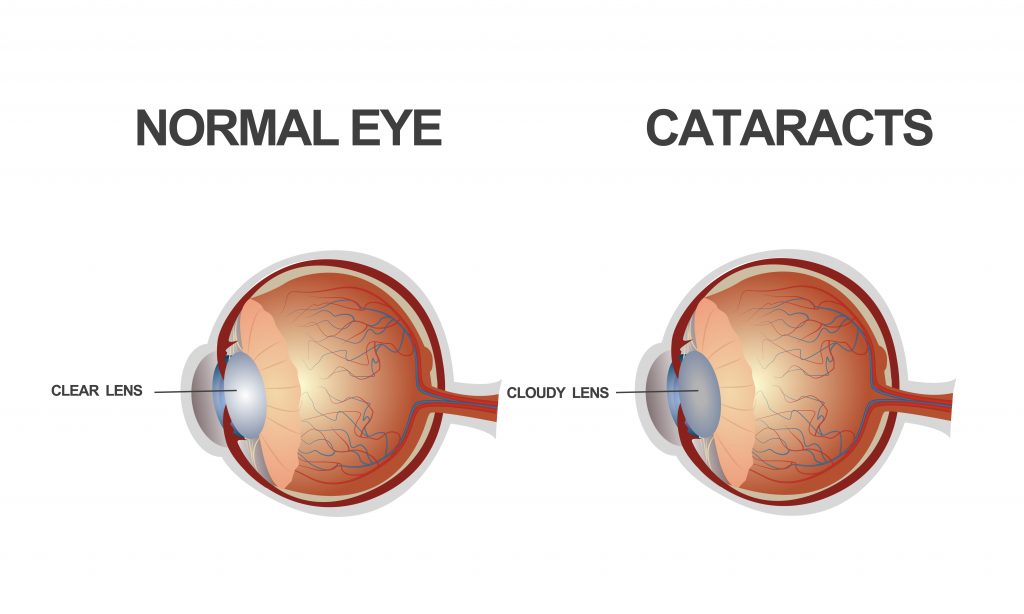- 5 Myths Cleared About Cataract – Anil Eye Hospital
- Dr Priti -
What Is Cataract?
A cataract is a clouding or development of opacity in the natural intraocular crystalline lens. The crystalline lens is the one that focuses the light entering the eye into the retina so that we can see clearly.
What are the symptoms of cataracts?

In the initial stages of cataract, the symptoms are mild and sometimes not at all noticed by patients esp if the cataract is developing gradually in both eyes or if only in one eye and the other eye lens is clear.
Symptoms noted can be as follows:
- Loss of contrast sensitivity
- Loss of ability to discern colors
- Changes in spectacle prescription sometimes frequently
- Difficulty in night vision
- Difficulty in reading in dim light
- Glares and haloes around light
- Blurring of vision in mild cases to total vision loss and blindness in severe cases
- Sometimes double vision

What are the risk factors for the development of cataracts?
- Age is the most important risk factor as it is a natural ageing process of the lens.
- Genetic predisposition primarily leads to congenital or pediatric or other cataracts.
- Diabetes or episodes of uncontrolled increased blood sugar on and off.
- Steroid use for long duration by any means oral or inhalation or eyedrops
- Ultraviolet rays exposure
- Smoking
- Eye related trauma
- Prior eye surgeries
- Secondary to ocular diseases like uveitis, retinitis pigmentosa
- Secondary to dermatological or autoimmune disorders
- Secondary to radiation exposure and or chemotherapy.
What are the causes of cataracts?
Cataract development is multifactorial.
Causes of age-related cataract
1. There is an accumulation of lens material over the existing crystalline lens which leads to compaction and stiffening of the lens.
2. Abnormal changes in lens protein lead to loss of transparency. Due to the accumulation of fibers and or changes in lens protein of different parts of the lens we have different types of cataracts like nuclear, cortical, post, and anterior subcapsular.
3. Pigmentation of lens protein leads to a change in color of the lens from transparent to yellowish to yellow to brine scent to dark brown to black cataract.
In the subsequent series wherein we shall see different types of cataracts I will discuss in detail about them.
What is the treatment for cataracts?
This is a million-dollar question literally and figuratively. There is no medical line of treatment to treat or prevent the development or progression of cataracts. No spectacles or contact lenses can treat cataracts. The only line of management is the surgical removal of the cataractous lens and implantation of the artificial intraocular lens, irrespective of the type or mode of cataract surgery used. In the subsequent series, I shall discuss different types of cataracts and their causes.
MBBS,DOMS
ANIL EYE HOSPITAL.




